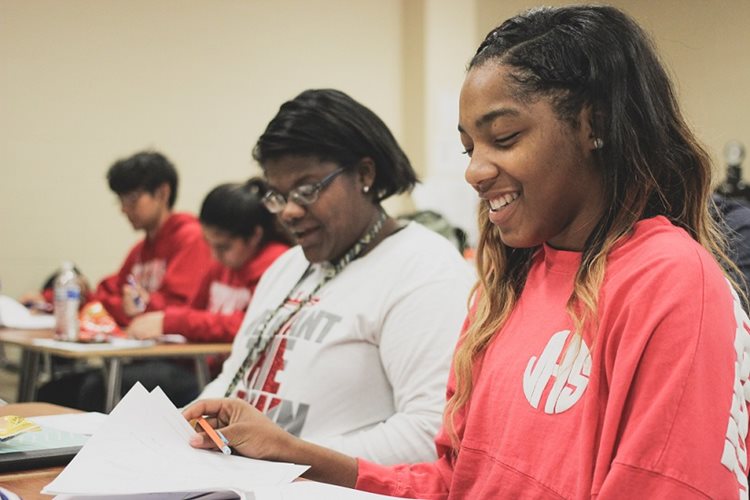Mitigating COVID-19 Learning Loss | American Rescue Plan ESSER Fund
NMSI |
May 24, 2021
The pandemic upended the education landscape, challenging teachers, students and caregivers. While the human capacity to pivot and adapt has demonstrated amazing resilience, the situation also has illuminated system inadequacies and significant inequities.
Academic learning losses are a growing concern, especially for children living in low-resourced communities who have been disproportionately affected by the abrupt shift to remote schooling due to limited or no access to broadband internet.
Equally concerning is the harder-to-predict developmental effects of ongoing social deprivation, both in and out of school, for children. The American Rescue Plan Elementary and Secondary School Emergency Relief (ARP ESSER) Fund was enacted in March of 2021 to enable schools to reopen and address the impact of the coronavirus pandemic on the nation’s students and to address the widening gap in learning and mental well-being of the country’s diverse student population.

The ARP ESSER Fund
The American Rescue Plan Elementary and Secondary School Emergency Fund (ARP ESSER) is the third Federal COVID-relief package and the largest ever federal investment in K-12 education to help reopen schools safely, with particular attention to the social, emotional and academic needs of students. The package provides a total of nearly $122 billion to states and school districts.
How Can ARP ESSER Be Used?
At least 20 percent of the money must be used to provide evidence-based interventions that address learning loss. Those interventions must respond to students’ social, emotional and academic needs and address the disproportionate impact of COVID-19 on underrepresented student subgroups.
Although the ARP ESSER funding aims to prevent, prepare and respond to the impacts of COVID-19, districts have the discretion to use funds to address learning loss and focus on students’ social and emotional needs—specifically Black, Indigenous and youth of color. A study conducted in December 2020 suggests that students of color might be six to twelve months behind by the end of the academic year in June 2021, compared with four to eight months for White students.
Two programs offered through the National Math and Science Initiative (NMSI), Laying the Foundation and the College Readiness Program, address the academic needs and the disproportionate impact of COVID-19. In addition, embedded training for teachers to address social-emotional needs is available.
While the infusion of funds is desperately needed, deciding how to appropriate this vital asset can be daunting. To assist you, NMSI has developed a guide and companion workbook. In addition, NMSI can work with schools to build the required evidence-based plans detailing how they will allocate the money.
How Technology and Professional Development Fit Into ARP ESSER
Both technology and professional development play a critical role in addressing learning loss and learning challenges and are allowed under the 20 percent requirement. Schools can also elect to spend more than the allocated 20 percent on learning loss. The funds may be used for various activities to address needs arising from the coronavirus pandemic.
Also included are any activities authorized by the ESEA, the Individuals with Disabilities Education Act (IDEA), Adult Education and Family Literacy Act (AEFLA), or Carl D. Perkins Career and Technical Education Act of 2006 (Perkins CTE). If spending has been approved under those programs, the ARP ESSER funds can be used for the same or similar purposes.
Equipping educators with the skills and tools to tackle learning challenges through professional development can help pave the way to mitigate learning loss and increase student achievement. Working with NMSI will enable you to develop a comprehensive plan to address learning loss and configure a better learning environment throughout the year with our NMSI 365 program.